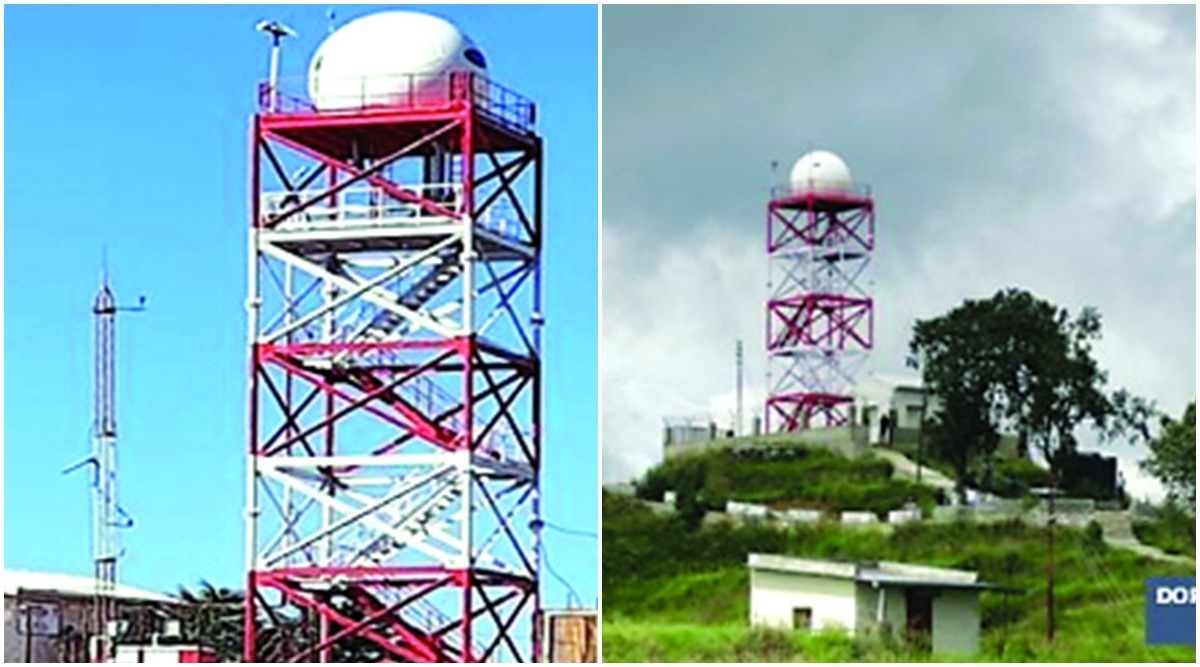 Doppler radars at Kufri and (right) Mukteshwar. (Courtesy: IMD)
Doppler radars at Kufri and (right) Mukteshwar. (Courtesy: IMD) Union Minister for Earth Sciences Dr Harsh Vardhan Friday commissioned two of the ten indigenously built Doppler weather radars which will closely monitor the weather changes over the Himalayas.
Services of X-band Doppler radars at Mukteshwar in Uttarakhand and Kufri in Himachal Pradesh were virtually inaugurated on the 146th foundation day of the India Meteorological Department (IMD) on Friday.
Covering the central and western Himalayas, these dual polarised radars will gather atmospheric variations and pick signals of extreme weather events, IMD officials said. During the month ahead, the Met department has planned to install ten radars over the Himalayas.
Both Uttarakhand and Himachal Pradesh are highly prone to cloud bursts, landslides, heavy rain and snowfall. Timely weather forecasts and warnings would ensure the governments make advance plans and initiate rescue measures, state officials said.
Uttarakhand Chief Minister Trivendra Singh Rawat said, “Being a hilly terrain that receives over 1,100 mm rainfall annually, the state faces numerous hardships due to different kinds of severe weather. We have experienced the benefits of receiving IMD’s forecasts. With three more Doppler radars getting installed, we hope to be better prepared for severe weather events in future and minimise all kinds of losses.”
Himachal Pradesh Chief Minister Jai Ram Thakur said, “Weather and climate play a significant role in both agriculture and tourism — the two main sectors contributing towards the state’s economy.”
Speaking on the occasion, Dr Harsh Vardhan said, “From just 13 radars in 2013, the country now has 29 radars operational. This will strengthen IMD’s forecasts further.”
From being allotted Rs 20 crore annually until a few years ago, the IMD now gets Rs 200 crore, said M Rajeevan, Secretary, Ministry of Earth Sciences (MoES), which has greatly helped in augmenting the overall weather services over the country.
“The IMD must now utilise the latest digital technology and work towards developing mobile-friendly weather applications, especially in regional languages,” Rajeevan added.
Mrutyunjay Mohapatra, director general, IMD, said the Met department will strive to detect every severe weather event, issue advance forecasts and warnings and work towards minimising losses.
A joint venture with the Indian Space Research Organisation (ISRO), the Union minister launched a Multi-Mission Meteorological Data Receiving and Processing System. This new system will capture, process and make available for use satellite data within seven minutes as opposed to 20 minutes taken by earlier systems.